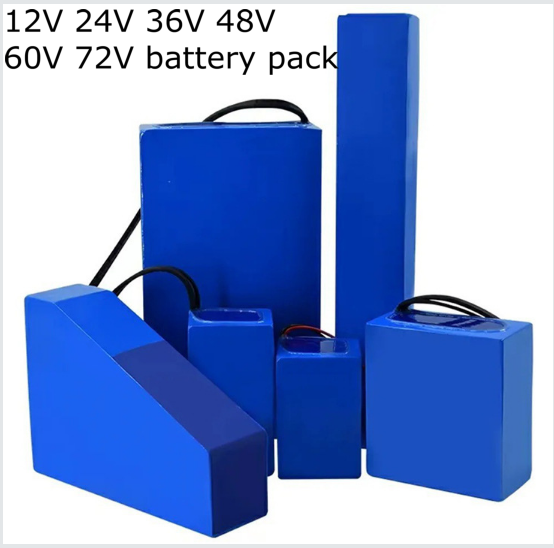How Do You Calculate The Voltage And Capacity Of A Lithium Battery?
How Do You Calculate The Voltage And Capacity Of A Lithium Battery?
How do you calculate the voltage and capacity of a lithium battery? How to calculate how many batteries are connected in series and parallel?
1. To calculate the voltage and capacity of lithium batteries, we need to know the voltage of different cathode materials to calculate the rated voltage.
| Comparison of different types of lithium batteries | ||||
| CELL type | Ternary lithium cell | Lithium iron phosphate cell | Lithium manganate cell | Remark |
| Voltage platform | 3.6V or 3.7V | 3.2V | 3.7V | Calculate rated voltage |
| Charging voltage | 4.2V | 3.65V | 4.2V | Charging voltage |
| Security | Medium | High | Medium | |
| Cycle Life | Medium | High | Low | |
| High Temperature Performance | Medium | Good | Bad | |
| Low Temperature Performance | Medium | Bad | Good | |
| Rate Characteristic | Medium | Good | Medium | |
2. lithium battery pack is composed of battery cells by series and parallel connection
1, series connection (S): increase the voltage, the capacity remains unchanged.
For example: one lithium ternary cell rated voltage of 3.6V, capacity of 2600mAh, 10 lithium ternary cells in series, the battery pack voltage: 3.6v × 10 = 36V, capacity unchanged 2600mAH, the final is 36V 2600mAH.
For example: one lithium ternary cell rated voltage is 3.6V, capacity is 2600mAH, 10 lithium ternary cells are connected in parallel, the battery pack capacity: 2600mAH × 10 = 26000mAH, the voltage remains unchanged at 3.6V, the final is 3.6V 26000mAH.
For example: 1 lithium iron phosphate cell rated voltage 3.2V, capacity of 4000mAH, 10 lithium iron phosphate cells in parallel, the battery pack capacity: 4000mAh × 10 = 40,000mAh, the voltage remains unchanged 3.2V, the final is 3.2V 40,000mAh.
3,the battery cells are connected in series and parallel at the same time, the same calculation method, calculate the voltage, capacity on the line.
4, lithium battery pack power WH = battery pack rated voltage V × battery pack capacity AH.

For example: ternary battery pack 48V 15AH
Voltage: 3.7V×13=48.1V≈48V
Capacity: 2500mAh×6=15000mAh=15Ah
Electricity: 48v×15ah=720WH
Third, how to calculate how many cells in series
Ternary 48V, rated voltage of 3.6v for example: 48/3.6 = 13.3 ≈ 14series
Take ternary 48V, rated voltage is 3.7v for example: 48/3.7=12.9≈13series
Lithium iron 48V, rated voltage of 3.2V, for example: 48/3.2 = 15 series
For example 48V battery
Example: Calculate with one ternary cell 3.7V:
13 cells in series (13 * 3.7V = 48.1V) Charging voltage: 13 * 4.2V = 54.6V
14 cells in series (14 * 3.7V = 51.8V) Charging voltage: 14 * 4.2V = 58.8V
Example: Calculate with one LiFePO4 cell 3.2V:
15 cells in series (15 * 3.2V = 48.0V) Charging voltage: 15 * 3.65V = 54.75V
16 cells in series (16*3.2V=51.2V) Charging voltage: 16*3.65V=58.4V
Charge to 4.2V (LiFe charging to 3.65V) with 0.5C multiplication rate at room temperature, and then switch to constant voltage charging.
Fourth, how to calculate how many cells are connected in parallel
Take 20Ah lithium battery pack as an example
The rated capacity of a single cell is 2500mah, 20Ah/2.5Ah = 8 parallel connections
 English
English
What Is a Prismatic LiFePO4 Cell
A Prismatic LiFePO4 cell is a type of lithium iron phosphate battery cell designed in a rectangular or box-like shape, known for its high energy density, stability, and long service life. Unlike cylindrical cells, which are rolled and enclosed in metal casings, prismatic cells use flat layers stacked inside an aluminum or steel shell. This structure allows for better space utilization and easier integration into larger battery packs.
Read MoreCustom 24V Lithium Battery Pricing
The price variation for custom 24V lithium batteries fundamentally stems from “base cost + functional cost + customization cost + compliance cost.”
Read MoreCustomized 48V Lithium Batteries: High Demand in Three Key Industries
Large medical carts, portable testing instruments, and other equipment require a 48V battery to provide stable power, while also complying with the ISO 13485 medical standard to avoid electromagnetic interference affecting device accuracy.
Read More